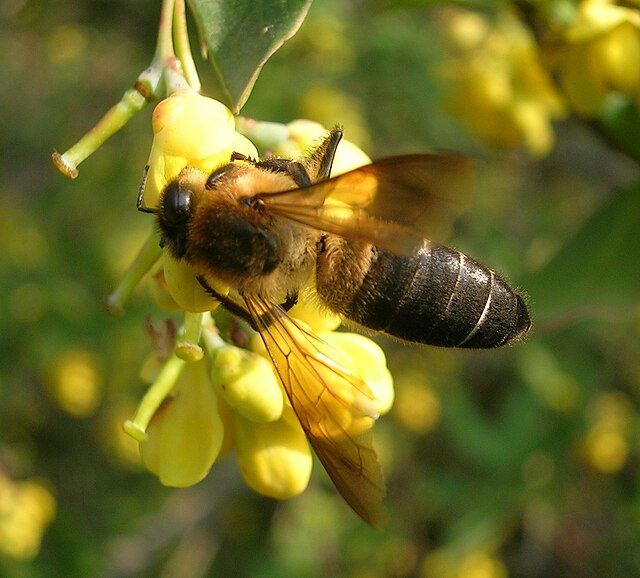Apis laboriosa or Himalayan giant honey bee, is the world's largest honey bee; single adults can measure up to 3.0 cm (1.2 in) in length. Before 1980, Apis laboriosa was considered to be a subspecies of the widespread Apis dorsata, the giant honey bee, but in 1980 and for almost 20 years thereafter it was elevated to the rank of a separate species. It was classified once again as a subspecies of Apis dorsata by Michael S. Engel in 1999, but was confirmed as a full species in 2020 on the basis of co-occurrence with Apis dorsata at many sites with no sign of interbreeding. It is highly adapted to its highland habitat in behavior.
Apis laboriosa
A honeycomb colony of Apis laboriosa on a vertical rockface in the Himalayas of Sikkim, India.
Apis dorsata, the rock bee or giant honey bee, is a honey bee of South and Southeast Asia. They are typically around 17–20 mm (0.7–0.8 in) long and nests are mainly built in exposed places far off the ground, like on tree limbs, under cliff overhangs, and under buildings. These social bees are known for their aggressive defense strategies and vicious behavior when disturbed. Though not domesticated, indigenous peoples have traditionally used this species as a source of honey and beeswax, a practice known as honey hunting.
Image: Bidens Apis dorsata pollen baskets
Image: Honeybee on Mimosa pudica at Kadavoor
A nest of A. dorsata, consisting of a single exposed hanging comb: The bottom of the comb has a number of unoccupied hexagonal cells.
Close up of workers on a hive. The colony was being formed at the time of taking this image. Note the multiple layers of bees on top of each other.






